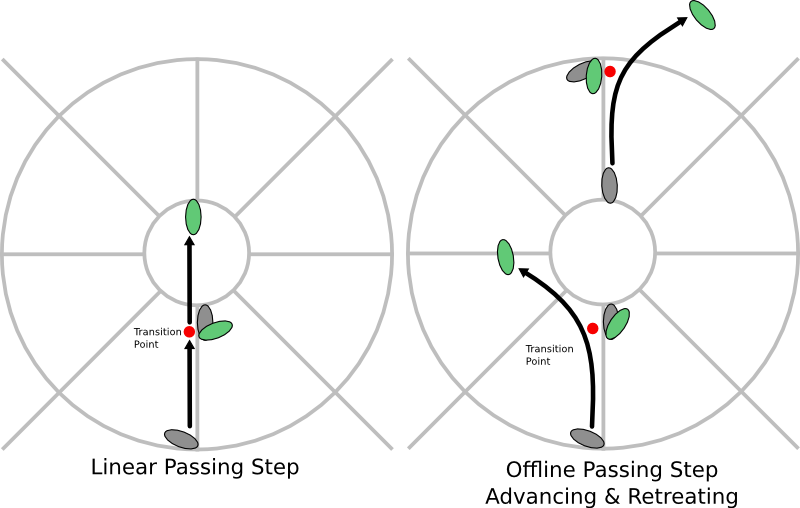Footwork
Not all of the fencing texts from history are clear as to the type of footwork which should be used. Meyer, however, does devote a section of his text to this topic. He describes four specific types of footwork; passing steps, triangle steps, double triangle steps, and stolen steps; we'll use the term 'canonical' for these types of footwork. Through the body of his text he also refers to other methods of stepping without explicitly describing it in the footwork section, including gathering steps, cross steps, and glide/side steps.
In general footwork should be performed while maintaining the broader elements of the posture described in the previous section; the body and hips should act as a single motion segment and the line of motion should not move up and down through the stepping (which is to say no bouncing in the steps should occur, motions should be smooth and even), the head shouldn’t tilt or move, steps should be smooth and fluid, not choppy and uneven. Neither should the foot be stamped down hard (this immediately stiffens the leg and makes you prone to having your balance taken from you).
Generally stepping can be broken into two broad groups; steps which pass through a central point before continuing (transitional steps), and steps which simply go directly to their destination (non-transitional steps)
Transitional Steps
These steps can pass through a central transition point before moving to their destination. This transition point acts as a decision point at which the step can still be changed into a different type of stepping. A passing step can become a stolen step, for example, by reversing the direction of the foot at the transition point and moving back to the original position.
It is not always necessary to use this transition point (an offline passing step, for example, might go directly to its destination, however the theory is useful in many circumstances.
Passing Step
This is the simplest form of stepping and the most natural.
Often the passing step will be performed offline to one side or the other as part of a particular technique. For example as our opponent attacks with a straight down cut we might passing step forward to his side to achieve our own technique or counter. The passing step can also be done backwards, in the same way.
